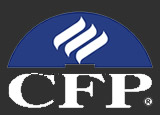Bubble, bubble, bubble! Tune in the news and particularly the financial news, and this is all we hear—bubble-talk! The teaser (just before a quick word from their sponsor) is something like this, “Some financial experts think the market is approaching bubble territory.” Then, after 20 minutes of commercials, the expert, who is usually the same expert who has been predicting doom-and-gloom since the 1950s, says they are “concerned” and they think, no urge, investors to “use caution” or “tread lightly.” On February 25, one station even trotted out perma-bear Nouriel Roubini. A sure sign of desperation for bad news is Mr. Roubini.
Well, my friends, we are not in a bubble. If you lived and invested through the IT bubble of 1999 and 2000, you would know that this is nothing like that. In fact, we have only had three equity market bubbles since 1900—they were in 1929, 1968 & 2000. There was the Real Estate Bubble of the mid-2000s and that spilled over to the markets–but the bubble was in Real Estate. All bubbles are essentially mass social-psychological events where, in general, we only identify afterward.
Bubbles require large swaths of people, a herd, so to speak, heading in the same direction—thinking the same thing—suffering from FOMO or fear of missing out. This is the proverbial Christmas party where you’re speaking with your cousin who you haven’t seen since last year—and he is making a killing in the stock market, or Real Estate, or tulip bulbs, or Cryptocurrency, or whatever. Then suddenly, it grips you, and nothing will suffice until you, too, get in on the action! That feeling, multiplied by a couple hundred million people, is how bubbles are.
There’s an old story about J. P. Morgan in 1929 (The J. P. Morgan.) As a routine, Mr. Morgan got his shoes shined every Wednesday, and in the late summer of 29, the shoeshine attendant asked if he could invest $40 (he and two other friends saved their money for weeks) through his brokerage. Mr. Morgan declined the money—went back to work and told his traders to start selling. He explained, “if the shoeshine boys are trading stocks, who else is left?” The October 1929 crash (a bubble bursting) was only a few weeks away.
Bubbles happen when people take out second mortgages to “invest” in stocks, they dump everything they have and borrow more to play that hot tip they heard at work. They drain checking accounts, bank accounts, bond funds, Bond ETF’s, piggy banks, everything they have goes into pets.com or some other “can’t-miss” stock. Why? Because everyone is making more money than they are! Remember when everyone was buying Real Estate in the 2000s? No money down—no risk, prices always go up, right?
Well, what do we have now in the equities market? Let’s take a look at money flows. As in, where is new investment money heading today?
In 2019, US Equities (the market) experienced an outflow of $81 Billion. Taxable Bond Funds/ETFs had a $415 Billion inflow, and Tax-Free Bonds had an influx of $105 Billion, and just plain Cash had a positive boost of $576 Billion. In a year when the S&P 500 grew by about 29%, and a diversified Bond portfolio paid about 9.8%, and Muni-bonds 7.5%, and Cash paid almost nothing, US stocks lost $81 billion in assets. The three, non-equity, lower returning asset classes, gained about a trillion dollars while stocks lost $81 Billion. Not what I would call a herd running over the stock cliff.
Well, perhaps 2020 was better. Let’s see: US Equities had an outflow again, even more this time at $203 billion. And Taxable Bonds/ETFs gained another $365 billion while tax-free picked up $41 billion. Cash grew by an astounding $684 billion! What happened in Equities—must have been a bad year, right? S&P 500 was up 16%. That diversified bond portfolio rose 6.6% while, again, Cash barely paid for the quarterly statement’s postage stamp. Another Trillion not invested in equities!
This is not herd mentality. This is not stock mania. Ergo, this cannot be a bubble. There is simply too much fear of the market for it to be a bubble.
Quick story, I was giving a presentation to a group of people the other day. As I often do, I explained that they need to be prepared mentally for periodic dips in their account’s value. I even brought out the old saying, “the market goes up on an escalator and comes down on an elevator.” It’s as natural as rain, and like rain, it is not forever. Well, one of the gentlemen blurted out that that he lost $50,000 in 2009! And I got a distinct impression that he has never gone back. He tried, he lost, he quit.
Much of today’s fear of investing traces a straight line back to that 2009 bear market—and some folks will never invest again. That is OK. This is a good thing. The markets are not for everyone. But again, this is why we don’t have a tidal wave of money flowing into the markets. As investors ourselves, we really only want other investors or market participants who understand that investing is a long-term exercise. Day traders, or speculators, are not investors—they are closer to gamblers.
One last thing. I get a lot of questions about when is the best time to invest. In other words, when should I buy to get the best prices. Here is my answer—the best time to invest is when you have the money. When is the best time to sell in the market? The best time to sell is when you need the money. Otherwise, buy it and forget it.
We cannot time the market. Trying to find the best time to buy or sell is at best a 50/50 shot, and as Peter Lynch so succinctly said, “Far more money has been lost by investors preparing for corrections, or trying to anticipate corrections than has been lost in corrections themselves.”
Sometimes, the investment world tosses a softball right down the middle of the plate, like March and April of 2020. When this happens, we should be buying with both hands—but like March and April of 2020—these investment gifts occur when most people are worked up into a frenzy about some existential threat and are afraid to buy a ripe banana for fear that they won’t be around to eat it. Timing is only perfect in the rearview mirror.
With that said, I am an optimist about this market and the near future. Corporate innovation is simply on fire (IT, Robots, AI, Gene therapy, teleworking, etc.) Plus, we have a tremendous increase in the worldwide middle class as extreme poverty is on the wane,[i] banks are flush with Cash[ii], the pandemic will end (everything eventually ends), and the consumer balance sheet has never been better[iii]. Incomes are up, and expenses are down. And for obvious reasons, pent-up demand is off the charts; I mean, it is difficult to spend money right now. We just took a weeklong vacation, and the paperwork required was worse than applying for a top-secret clearance.
These things all help the most outstanding companies, and corporations in the history of the world make profits—and they return those profits to the owners (us as shareholders) in the form of dividends or appreciated stock. All we need to do is ignore the noise and stay invested—it is as simple as that.
Thanks for reading, and as always, give us a call if you have any questions or concerns; I welcome your comments at mknight@chesadvisors.com.
MK
[i] In 1820 84% of the world’s population lived in extreme poverty—1950, it was down to 42%, the latest estimate in 2018 lists 8.6% in extreme poverty. (Ten Global Trends Every Smart Person Should Know. Bailey and Tupy, 2020 Cato Institute.
[ii] August 2020 Excess Reserves of Depository Institutions was about $2.85 Trillion. When Lehman Brothers declared backruptcy on Sept. 15th 2008, the excess reserves on that date was about $0.8 Trillion. https://fred.stlouisfed.org/series/EXCSRESNW
[iii] https://www.federalreserve.gov/releases/z1/dataviz/z1/balance_sheet/chart/
Finally, all data regarding returns and flows come from the outstanding “Guide to the Markets” by J.P. Morgan Asset Management, dated February 25, 2021 https://am.jpmorgan.com/content/dam/jpm-am-aem/americas/us/en/insights/market-insights/guide-to-the-markets/daily/protected/mi-daily-gtm-us.pdf


